Special to Transport Topics
Next Generation of Wireless Technology: 5G Holds Promise
[Stay on top of transportation news: Get TTNews in your inbox.]
The tech industry thrives on continuously offering consumers faster networks, devices and services with expanded capabilities. In that regard, the advent of 5G wireless networks is no different. But the 5G rollout has been more anticipated and discussed than many other recent advances in technology because of its potential to take communications to the next level.
As trucking increasingly incorporates digital elements, a pressing question grows: What, exactly, can 5G do for the industry? A lot, as it turns out.
However, subject matter experts caution that the technology currently has drawbacks, mostly because it has not yet reached the scale needed to run optimally. They believe that trucking communications are at least two years away from widely adopting 5G technology and experiencing its advantages.
Still, they say trucking companies should start learning about 5G innovations now and determine what future adoption will mean for business. That’s in no small part because 3G service is about to become a thing of the past, rendering legacy devices and older tracking systems nonfunctional.
“5G is a really exciting proposition,” said Terri Lucas, vice president of sales at trailer and asset tracking provider SkyBitz. “5G is where we’re going. It’s made for us. But there are still things that need to be worked out on those promises.”
What It Is
5G is the fifth-generation wireless communication standard for cellular networks on which mobile phones operate.
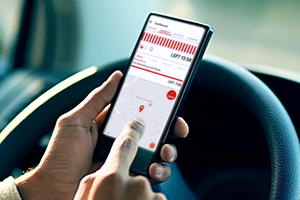
A driver accesses hours-of-service and route information on a smartphone. (Spireon via YouTube)
The first generation was analog technology, 2G delved into digital communication, 3G had additional data capability and 4G introduced LTE, or Long-Term Evolution, which is now a global standard.
Telecom companies began deploying 5G infrastructure in 2019, starting with urban areas and focused on consumer applications. The full buildout — into less dense areas and for commercial and industrial applications — is expected to take five to 10 years.
5G is built to support communications in the internet of things age, in which electronic devices talk to each other via sensors. The main advantage of 5G is that it provides much greater bandwidth. Along with that comes better reliability and blazingly fast response and download speeds, as well as reduced latency, or data transfer lag times. Telecoms report latency speeds of about 30 milliseconds during these early 5G stages; the lag time is expected to drop further when all the infrastructure is in place and the technology advances.
As service providers transition customers to newer, more robust wireless networks, they are discontinuing previous networks. Two key reasons are the expense of simultaneously maintaining multiple networks and the desire to reallocate data capacity to a more capable network. Customers with aged devices must convert to those that are compatible with the new network by a certain date or they will cease functioning.
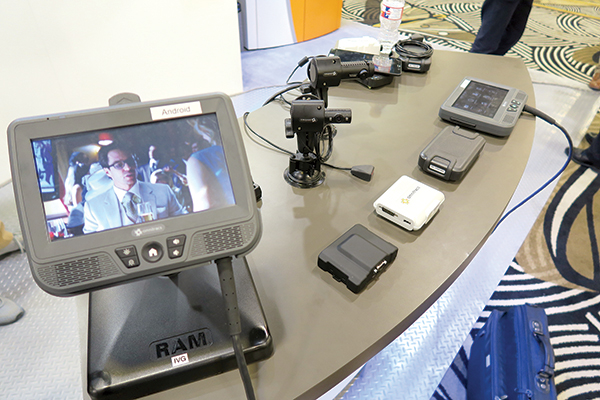
Connected devices such as onboard computers and cab cameras have become commonplace in trucking. (Seth Clevenger/Transport Topics)
Most U.S. wireless carriers announced plans to end 3G service by the end of 2021, and all should be at that point by the end of 2022. Customers do not need to immediately purchase new devices that will work on a 5G network, but rather ensure that they have 4G LTE compatibility.
The emergence of 5G is a little different than previous network generations because the 4G network will not exactly be “sunset” like other versions. The 5G network builds on 4G LTE using updated infrastructure and software.

Tarmas
“What they are planning to do is augment these 4G networks with 5G equipment and radios, and that will be a long, gradual process,” said Ken Tarmas, senior director of product management for Spireon, provider of the FleetLocate trailer and asset tracking system. “Carriers are saying 4G LTE will be around at least for 10 years. There’s really no sunset on anyone’s horizon in the foreseeable future.”
Fleets relying on 3G for telematics or other systems must upgrade soon to equipment that uses 4G LTE.
“In-cab over the last two years has been primarily focused on the ELD mandate, not necessarily making sure the hardware was up for a new network,” said Chris Wolfe, CEO of trucking telematics provider PowerFleet. “Now is the time that people are looking at how to migrate and do so in an efficient and effective manner.”
Several vendors designed their in-cab devices so fleets can swap out portions of the equipment instead of purchasing a completely new system.

Taylor
“We made all of our trackers very modular in nature, so it’s quick to remove the device itself with just a small tracking unit … that has the GPS antenna and cellular modem and antenna,” said Roni Taylor, Spireon’s senior vice president of business strategy and development. “We can just unplug it, take it off and put in a new one. That’s what many of our customers are doing as they’re going from 3G to 4G LTE devices.”
Transportation Applications
Although most of the 5G attention currently is on consumer cellphone applications, the technology has applications for trucking as well. It is considered a way to improve operating efficiencies, especially in the cab and on the trailer.
The increased bandwidth improves navigation network quality. Truckers could look at multiple views at once on their screen, and the system would operate with less lag in updating the driver’s position and providing directions. In this way, 5G is expected to boost trucking safety.

Lucas
Trailer tracking in the yard and on the road will get a boost as well. Vendors already are working on expanding smart trailer technologies with 4G LTE, but “the sky’s the limit” once 5G is in the equation, SkyBitz’s Lucas said.
Smart trailer systems include multiple sensors, or nodes, that communicate wirelessly with a hub on the trailer for data transfer. The sensors track vehicle performance measures such as tire inflation, antilock brakes, taillights, cargo status and door openings.
5G will allow for faster, more data-rich information transfer among trailer sensors and better cargo condition management, capacity building and detention time analysis. 5G isn’t merely about sensors talking to the network, but also how all of this data is aggregated in a meaningful way.
“When it becomes meaningful is when you take that information and bring it together with other enterprises in the business, and it makes decisions you’re not able to make. That’s the power of data, in my mind, and what this is all about,” Lucas said.
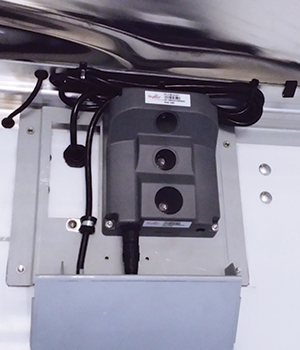
A SkyBitz cargo-monitoring sensor installed in a trailer. Onboard sensors are expanding as companies gather more data on their fleet operations. (SkyBitz)
Streaming video likely will be one of the most visible trucking applications to demonstrate 5G’s low latency benefits. It will create smoother, clearer, real-time video streams from onboard cameras. Drivers will also experience better video streaming to their personal devices, which could be used to view training or safety videos.
Onboard video can work on 3G, but the intense amount of data transferred makes it expensive on those networks, PowerFleet’s Wolfe said. Doing the same task with 5G networks’ larger bandwidth eventually will be cheaper. “That’s a value of 5G you couldn’t get before that you can now: relative expense to the value,” he said.
5G radios also could be deployed beyond telematics capabilities. They could enable mobile hot spot capabilities so the vehicle itself serves as a mobile hot spot.
A lot of the excitement about 5G and its IoT functionality in transportation centers on the promise of connected and autonomous vehicles. 5G’s low lag times are a crucial factor.
“Autonomous vehicles are only [feasible] when there is virtually no latency on the network,” said John Binder, director of wireless operations for Trimble Transportation.

Bose
Autonomous vehicles must share clear information quickly and respond instantly to hazards or changing road conditions. Any lag in the network could result in dangerous and costly consequences. 5G will bump up communication capabilities and “introduce more ‘smartness’ into the vehicles… and increase the bandwidth in terms of data that’s flowing back and forth,” said Ashim Bose, chief data scientist and vice president of artificial intelligence and machine learning at Omnitracs. This is particularly important for truck platooning.
Besides the more visible applications, 5G also could indirectly influence important business factors such as driver retention. For example, higher quality and higher resolution communication improves the in-cab driver experience.
“When you have an improved experience, improved communication in-cab and with the back office, that has an impact on better job satisfaction. And that impacts retention in a positive way,” Bose said.
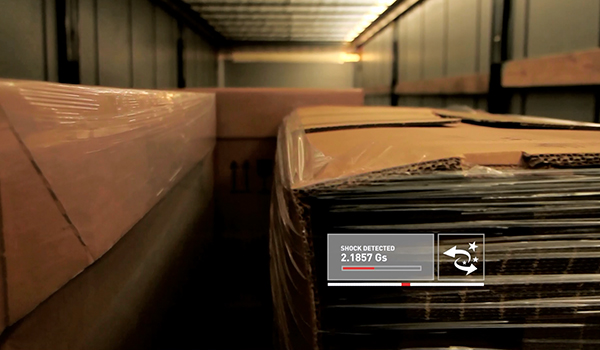
Technology vendors such as PowerFleet are offering cargo tracking down to the pallet level. Such technology may run on 5G networks in the future.
Not a Silver Bullet
5G holds promise for transforming communications in the trucking industry, but it does have disadvantages.
Trucking technology vendors agree that 5G is the future, but it’s not there yet.
There are “technical disadvantages with 5G, particularly for the telematics industry,” Spireon’s Tarmas said.
First, the signals travel a shorter distance than those of other networks, so infrastructure upgrades need to be installed at closer intervals. That will prove challenging for building out into the rural areas that truckers frequently traverse, because dense coverage is necessary for all the sensors to communicate well.

Binder
“If you had 5G in the field today, there would be limited coverage. … In our space, coverage is king,” Trimble’s Binder said. “There isn’t enough of a 5G footprint yet to support all the services our customers expect.”
5G is touted as being overall more reliable because of increased bandwidth, but so far, the signals have exhibited challenges with penetrating building walls in dense areas.
At the same time, 5G radios or modems consume much more power than other communication devices.
“For devices running on batteries, which is most telematics devices, that’s a concern,” Tarmas said.
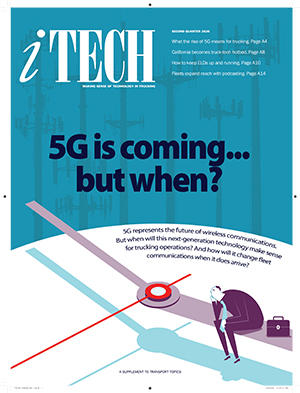
More Q2 iTECH stories
They also are more expensive, and right now, the expense doesn’t justify the investment, vendors said.
Despite the speed and clarity, some vendors believe 5G currently is overkill for digital trucking communications, and 4G LTE is adequate to meet most fleets’ tracking and telematics needs.
Because 3G will be obsolete soon, businesses using that technology at least need to migrate to 4G LTE compatibility. In the near term, technology vendors are focused on helping fleets with that transition. “Everyone is quite relieved that LTE is going to be around for a good 10 years. That means they don’t have to replace [4G LTE] devices,” Spireon’s Taylor said.
Vendors said the key is to make sure all equipment transitions are seamless for customers.
“It’s a real concerted effort to bring all of these things together in a way that doesn’t cause business disruptions,” Lucas said.
For some fleets, slow periods — such as during the ongoing COVID-19 pandemic — are ideal for technological upgrades because there are fewer business disruptions.
“Some companies are looking at that now: how to invest now, and come out stronger,” Wolfe said.
Still, vendors are keeping 5G on their radar and advancing equipment that will leverage it to improve fleets’ operations and bottom lines.
Right now, 5G in the trucking space is “premature in the applications and the overall impact — a lot of the applications haven’t even been built yet,” Lucas said.
But the right time will come.
“We have to develop toward it and we are. … It’s the future, and there are absolutely reasons for people to be excited about it,” she said. ³
Want more news? Listen to today's daily briefing:




